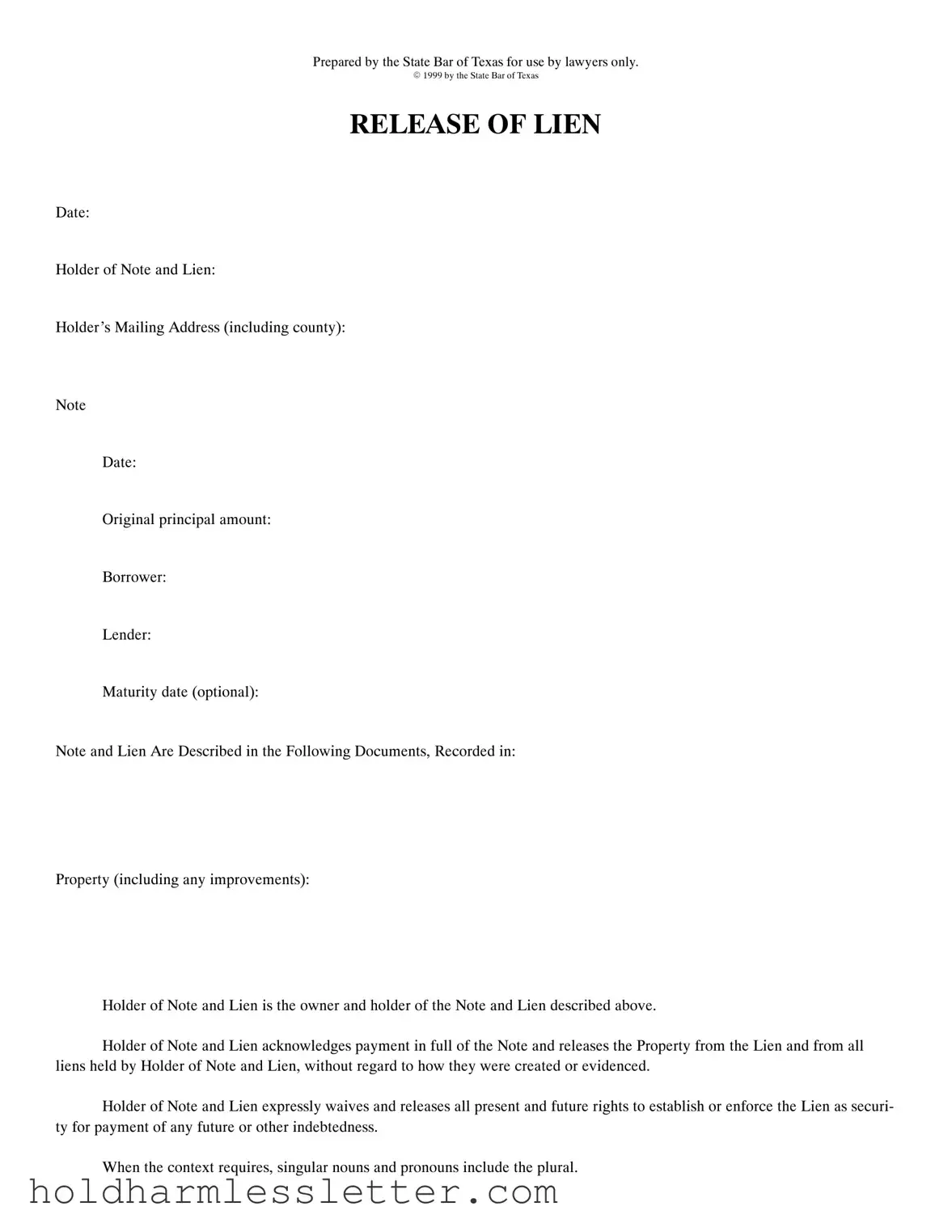What is a Release of Lien?
A Release of Lien is a legal document that officially removes a lien from the property. It acknowledges that the debt, usually tied to the property as security, has been fully paid, and releases the property from any further claims associated with the lien.
Who prepares the Release of Lien in Texas?
The State Bar of Texas provides a standard form for the Release of Lien, intended for use by lawyers. This ensures that the release complies with Texas law and contains all necessary legal elements.
When is a Release of Lien needed?
A Release of Lien is needed once a debt secured by a lien on a property is fully paid off. It's essential to properly document this release to clear the property's title and remove any financial claims or restrictions.
What information is required on a Release of Lien form?
The form requires details such as the date of the release, information about the holder of the note and lien, the borrower, lender, original principal amount, and descriptions of the property and the recorded documents that describe the note and lien.
How is a Release of Lien executed?
The holder of the lien signs the Release of Lien form in the presence of a notary public. The form must be notarized, acknowledging the lien holder's agreement to release the lien on the property.
Where should a Release of Lien be recorded in Texas?
After it's signed and notarized, the Release of Lien should be recorded with the county clerk's office in the county where the property is located. This makes the release part of the public record, clearing the property's title.
Is there a fee to record a Release of Lien?
Yes, county clerk's offices in Texas typically charge a fee to file a Release of Lien. The amount varies by county, so it's advisable to contact the local county clerk's office for specific fee information.
How long does it take for a Release of Lien to be processed?
The processing time can vary significantly by county. Once submitted to the county clerk's office, it can take anywhere from a few days to several weeks for the Release of Lien to be recorded and become part of the public record.
What happens if a Release of Lien is not filed?
If a Release of Lien is not filed, the lien remains on the property title, potentially causing problems for the property owner in future transactions, such as selling or refinancing the property. It's essential to file the release to ensure clear title.
Can the release process be expedited?
While some counties may offer expedited services for an additional fee, the availability of such services varies. Contacting the local county clerk's office directly is the best way to learn about options for expediting the process.
